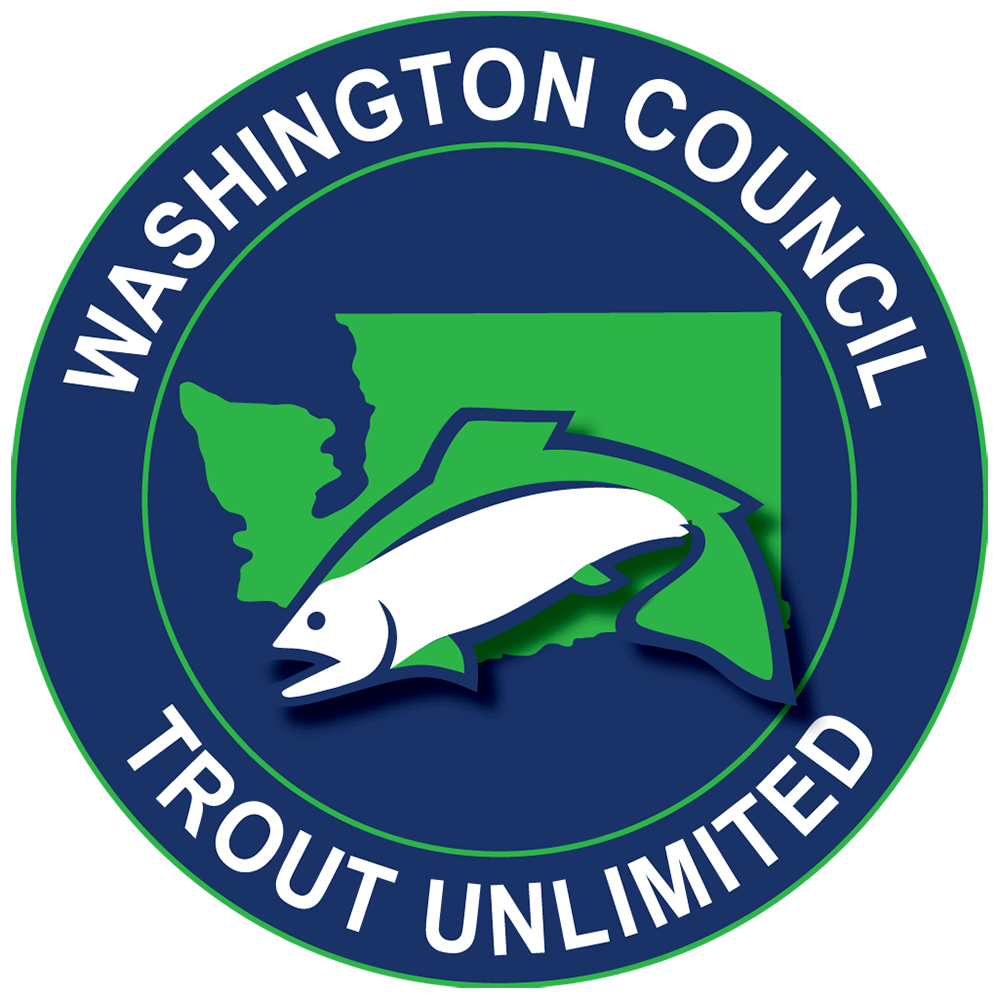Chapter Volunteers mobilize to restore off channel habitat on the Olympic Peninsula
Sean leading a pre-project overview and methods discussion (Photo Credit: Julie Kelner, KOP Chapter)
Written by Sean Ludden, Olympic Peninsula Restoration Project Manager - 10/03/2024
Kitsap/OP chapter members constructing mini structures in off-channel habitat to the Sol Duc River
Sometimes TU staff receives a call to action from partners that we just can’t pass up. Recently, one such opportunity came to me, requesting assistance for a wetland project that would take place on a tributary to the Sol Duc River on the Olympic Peninsula in Washington. With only a short timeline in which to take action, I discussed quick mobilization and planning with Kitsap-Olympic Peninsula chapter members. We then joined forces on site to restore the hydraulic function of a degraded wetland and enhance an existing beaver dam.
Chapter volunteers working on a small structure at a ditched outflow to the wetland complex (Photo Credit: Julie Kelner, KOP Chapter)
When we arrived, we took care of some housekeeping items, a safety update, and methods overview on Beaver Dam Analogues (BDAs) and Post Assisted Log Structures (PALS). BDAs are human-made constructions that mimic the form and function of a beaver dam to help improve aquatic and surrounding terrestrial ecosystems. PALS are similar, but are less structured than a BDA, more closely resembling the natural accumulation of woody debris by driving vertical posts or sticks in the ground to temporarily restrict the movement of other pieces of wood.
After the pre-project overview, we got to work to enhance this off-channel fish habitat. Using simple hand tools and materials on site, volunteers began to construct miniature versions of these structures in flagged strategic areas, such as riffle drops, channel constrictions, and ditch areas. By returning the degraded habitat to resemble more natural structures, we aimed to restore the form and function of the wetland, which helps reduce flooding, improves water quality, and creates higher quality habitat for wildlife.
Over the course of 3 hours, our small band of 5 volunteers completed enhancement of an existing beaver dam, constructed 3 mini-BDAs and 2 mini-PALS to begin reducing outflow and impounding water as it was meant to. As we wrapped up our work, there was a noticeable difference in the site; we could all see the benefits of our combined efforts – cold water began to slow, forming ponds as the sediment dropped out and the previously dried soil levels previously began to darken with absorbed moisture. Knowing the beavers in the area would keep up the work after we had stepped away was a nice conclusion to the workday.
We all learned some new methods and came away with some renewed confidence that small actions can lead to a world of difference, even if we only have a few days to prepare.
Thanks to Rayonier and the Washington Department of Fish and Wildlife for sending out the call for help. These projects and ability for chapter members to jump in to help have defined TU over the decades; with yet another small project we increase the capacity to do good for our watersheds and increase fish habitat into the future. Special thanks to Julie Kelner, Jeff Westerlund, Bill Stock, Chris Taylor, and Bob Ostericher for their willingness to lend a hand on short notice.
As the light rain begins, smiles all around as water began pooling and slowing behind built mini structures in a disturbed wetland complex




